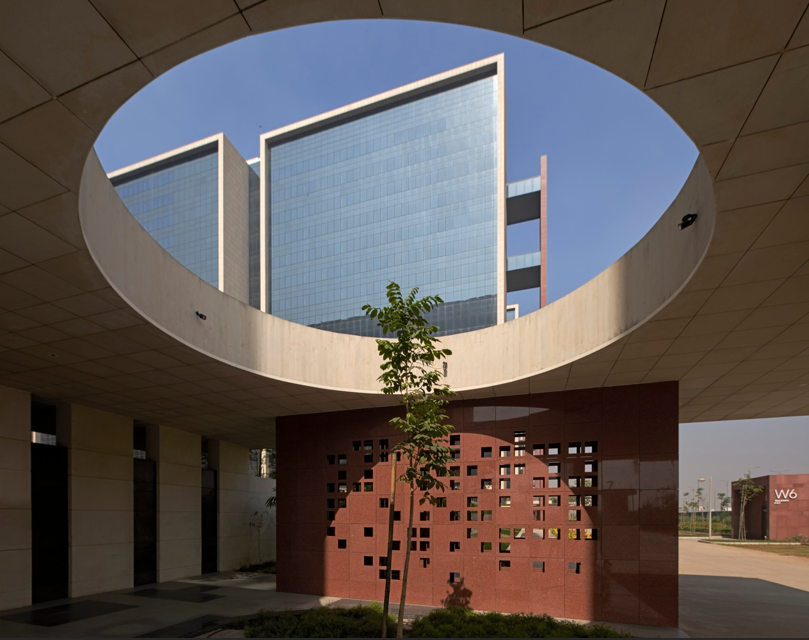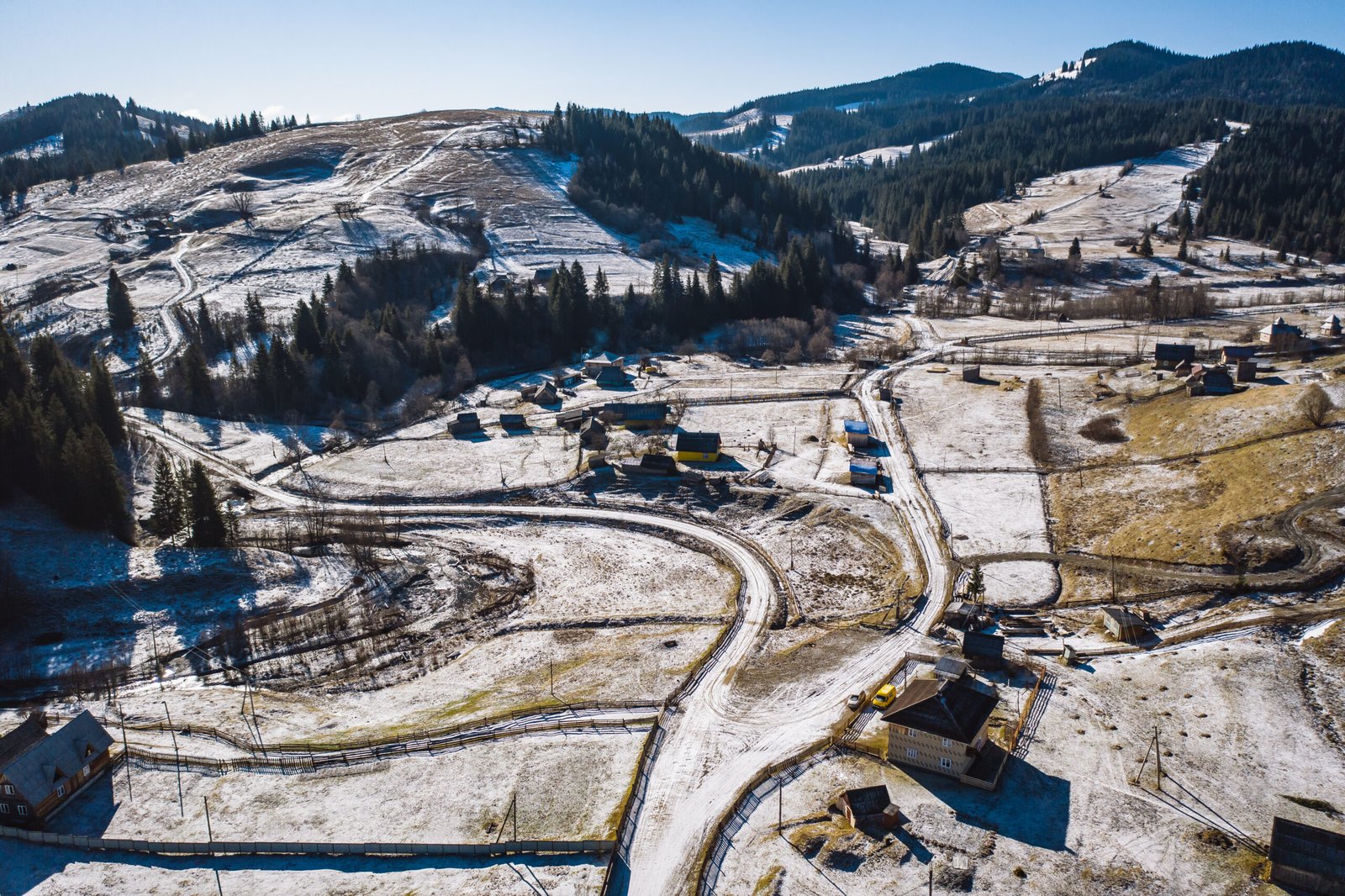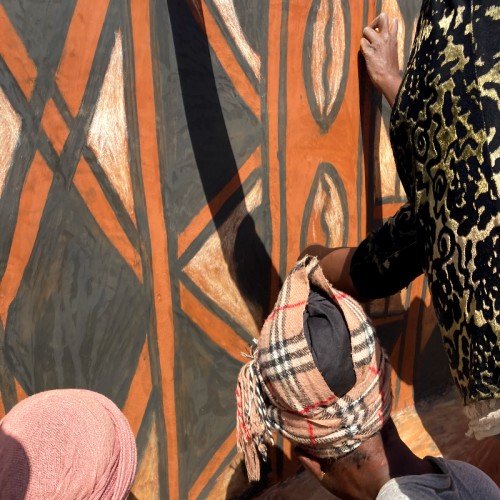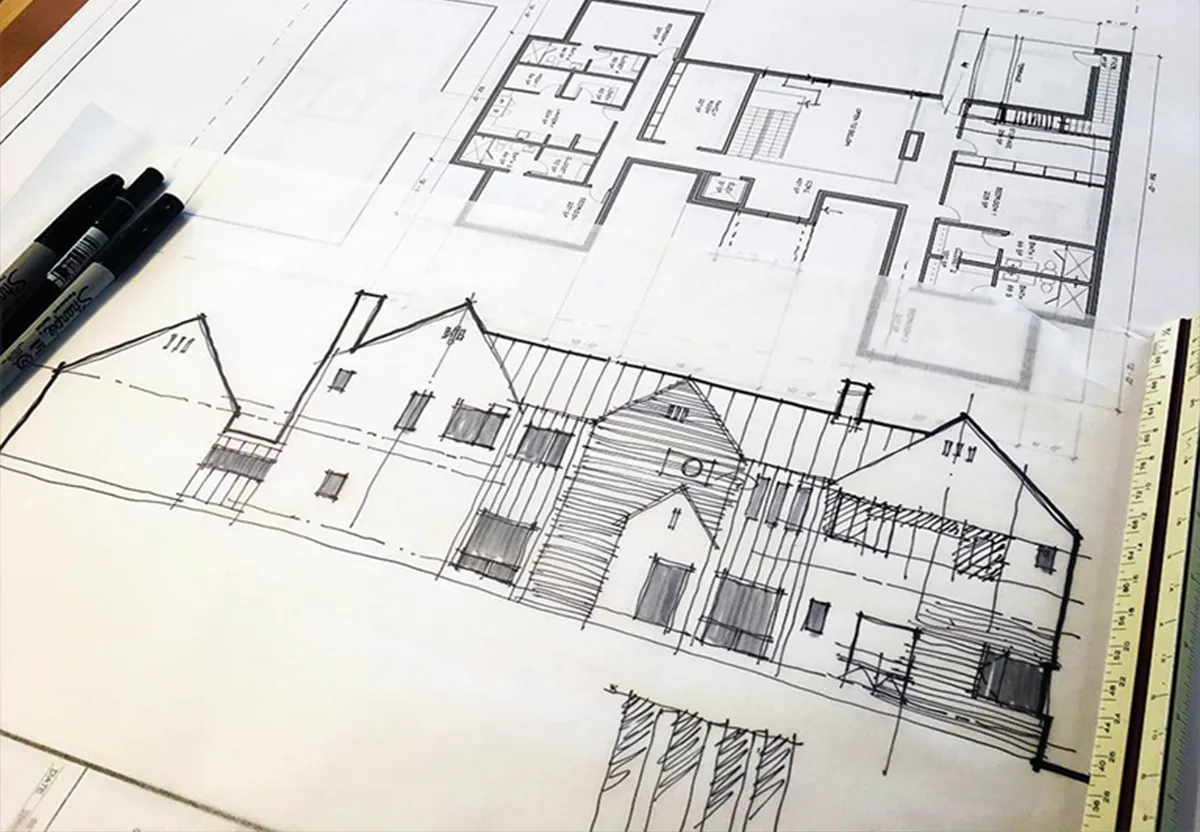The Surat Diamond Bourse brings a vast community together, uniting all activities of cutting, polishing, and trading under one roof. Over 90% of the world’s diamond pieces are from Surat, in the western Indian state of Gujarat. The city is host to the world’s largest community of diamond workers. Most traders, however, have to commute over 250 kilometers daily by train to reach Mumbai to conduct their business. As a result, it is impacting their cost of living and commuting as well as a healthy quality of life.
With a built-up area of 7.1 million sq. ft. occupying a 35.3-acre site, the design redefines office building typology. At the same time, it is establishing new sustainability benchmarks within the hot and humid climatic context of Surat


Nine office towers diverge from the central axis; interspersed with shaded courtyards for rest and recreation that can remain in use year-round. The 15-storey office towers orient towards the north-south, screening the harsh western sun and filling about 75% of the workspaces with diffused light throughout the day.


The Importance of Circulation
Designing the world’s largest commercial building comes with the responsibility of enabling an extremely high level of efficiency. For its monumentality, circulation was one of the defining parameters. The primary challenge was facilitating easy and efficient daily navigation for 67,000 people through the high-security premises.
To manage large volumes of people within trading-time constraints, the building has walkable corridors across all floors, similar to an airport terminal, unifying it horizontally and vertically. The optimal travel distances from the site entrance to the farthest office module determines the functional proximity, which is under 4 minutes from the point of entry.

Flow Of People In Space
The design allows the flow of people to minimize security such that once checked at the perimeter, traders can traverse the building multiple times a day. The structure rests on urban-scale columns that double up as seating areas.

Collaborative History
Transcending prevalent trends of conventional glass-enclosed, mechanically-cooled office buildings, Surat Diamond Bourse responds to the way of life of the diamond trading communities. The diamond traders have a history of working in a highly collaborative fashion, collectively utilizing the skill sets of different members.

The central axis thus functions like the building’s spine, creating an interactive hub comprising break-out spaces, green atria, and a host of visual experiences, allowing for multiple chance encounters throughout the work day. In addition, the building accommodates designated offices and greenery-filled common areas that double up as informal workstations, drawing from the existing culture of working in the open air.

The building creates a vibrant and lively atmosphere for the workforce with ample natural light and easy access to green pockets. The morphology, which maximizes mutual shading, ensures that the courts can support the way of life of the diamond community, including recreational activities and open trading like in a traditional bazaa

It is a well-known fact that the building industry is the largest contributor to global emissions of greenhouse gases. A lesser-known fact is that there is no bigger energy guzzler in the building industry than the office typology.

This attributes to the high density of users in this typology and the fact that they consume a tremendous amount of energy for air conditioning and lighting. Surat Diamond Bourse directly offsets these challenges using low-tech passive strategies and modern technology. The orientation of the self-shading blocks cut out the harsh western heat within 15 acres of landscaping that further keep the site cool.

Greenery and Landscape
Gardens distributed along the entire volume of the axis work as natural air filters, enhancing indoor air quality. 100% of community and circulation spaces, covering 30% of the building’s area, rely on passive cooling for ventilation.

On non-windy days, staggered atria interrupt the spine vertically, allowing hot air build-up to escape through the stack effect. The atria also incorporate green lungs that foster a pleasant internal microclimate without mechanical cooling. The building also features one of the largest installations of radiant cooling (approximately 20 kms of running length of radiant pipes per floor; the cumulative length is approx. 300kms). Energy efficient systems cool 40% of the built-up volume that uses chilled circulated water on the floors and ceilings.

Energy Conservation Strategy
The north-south orientation of the office blocks, coupled with the narrow depth of the floor plates, ensures that more than 75% of internal spaces are daylit, drastically reducing the dependence on artificial lighting. The common areas run on solar power throughout the year. A sensitive approach to achieving energy efficiency has led to the building consuming 50% less energy with a performance of around 45 kWh/sq.m./yr, compared to industry green benchmarks (110 kWh/sq.m./yr. as per Energy Conservation Building Code). These interventions have resulted in the building earning the Indian Green Building Council (IGBC) Platinum rating.


The building, commissioned by the community of diamond traders, is built in a democratic manner, as a cooperative. The community ensures that the building cateres to the needs of all traders, with large designated office spaces for large-scale traders as well as informal courtyard spaces that allows small-scale traders to work flexibly.

In addition, the diamond traders and facility managers responsible for the upkeep of the premises formed an integral part of the design team, ensuring that all requirements were factored in. The building is thus a result of the collective agency exercised by the community.

Material Choice
Locally sourced materials were incorporated with a minimal waste-to-landfill approach. Lakha red granite and Gwalior white sandstone used in the construction have been procured from within a 300 km radius. Stone-working communities from the Deccan Plateau were employed at all stages, from quarrying to dressing and application.

The project exemplifies the idea of decentralized development, symbolic of Surat’s progress and rapid economic growth. Apart from the facility itself generating employment in the area, manufacturing units were set up locally to support the construction of the bourse, further creating opportunities for growth in the area.

The construction of the project has aided the establishment of new social infrastructure, with schools and hospitals coming up as a result of community initiatives. In this manner, the building catalyzes holistic development in the tier II city while alleviating unchecked urban migration.




Designed by: Morphogenesis
Project Type: Commercial Architecture
Project Name: Surat Diamond Bourse
Location: Surat, Gujarat
Year Built: 2023
Project Size: 7109035 Sq.ft
Principal Architect: Manit Rastogi & Sonali Rastogi
Photograph Courtesy: Edmund Sumner
Source: Archdaily






